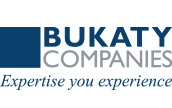Area insurers (carriers) are beginning to issue 2022 plan year medical loss ratio (MLR) rebates. The Affordable Care Act requires insurers to meet MLR requirements each year. If an insurer doesn’t meet the minimum MLR (spend 80 to 85 percent of its premium dollars on health care or activities that improve health care quality), then the insurer must issue a rebate to the affected individual and group policyholder by September 30, 2023.
Not all plans will receive an MLR rebate. In fact, the majority of policyholders will not receive rebates. Employers who receive a rebate should allocate the funds among plan participants within three months of receiving an insurer’s rebate. The MLR requirements don’t apply to self-funded group health plans.
Employers who sponsor a group plan that is a non-church or non-federal government plan are subject to ERISA’s rules of fiduciary conduct. Employers have an obligation to ensure any portion of a rebate that is considered a “plan asset” is allocated in a manner that is impartial and fair and in the best interest of plan participants and beneficiaries.
When selecting how “plan assets” will be allocated, a plan fiduciary must evaluate the costs to the plan, the ultimate plan benefit and the competing interests of participants or classes of participants. For example, if the cost of distributing rebate shares to former employees would deplete the proceeds, then the employer may decide to allocate proceeds to current participants only.
Bukaty Companies recommends that employers document the justification for the allocation method selected. This statement, along with a record of who received rebates and the rebate amounts, should be retained in the event of a future inquiry by participants or the Department of Labor.
There are four general methods of allocating “plan assets” attributable to the MLR rebate for ERISA group health plans. Employers should consider consulting with their legal advisors before adopting a methodology preference.
Allocation methods (applies to employers who pay a fixed percentage of all premium cost)*
1. Reduce premiums for all 2023 plan participants who were enrolled in the plan receiving the MLR rebate in 2022. Premium reduction is proportionate to the premiums the plan participant paid in 2022.
2. Reduce premiums for all 2023 plan participants regardless of their participation in the 2022 plan.
3. Distribute the rebate in the form of a check to 2022 plan participants in an amount proportionate to the premiums paid by the plan participants in 2022. Under this option, rebate checks would be issued to anyone enrolled in the plan in 2022 – even if they weren’t employed by the group as of the date the rebate check was received from the insurer. The rebate is subject to the usual income and employment taxes. Payroll providers should treat the rebate as a “negative deduction” for Form W-2 purposes.**
4. The rebate can be applied toward benefit enhancements. Given there is no regulatory guidance on what defines “benefit enhancements,” this method should be discussed with your legal advisor.
*If an employer pays a fixed amount (rather than a fixed percentage) of the annual premiums and employees pay any additional costs, an employer may not be entitled to any portion of a rebate, should the value of the rebate be less than the total value of premium contributions paid by all employees. In such instances, the entire rebate is considered a “plan asset” and should be distributed solely for the benefit of plan participants. Generally, if an employer only contributes to employee-only coverage and a significant number of employees pay the entire cost of dependent/family coverage, the employer will not be eligible for any proportionate share of the rebates. Clients who think their premium contributions represent a fixed amount should contact their Bukaty Companies benefit consultant to discuss in greater detail.
**There are federal and employment tax consequences when a rebate is issued for 2022 premiums that were paid with pre-tax dollars (via a Section 125 / cafeteria plan). Essentially, the employee’s taxable income in 2023, as reported on Form W-2, will increase by the amount of the rebate.
Non-federal governmental plans (municipality, county plans)
Insurers of policies to non-federal governmental plans are directed to distribute the entire rebate to the group policyholder (employer), and the group policyholder is required to use the portion of rebates attributable to the amount of premium paid by plan participants for the benefit of current plan participants only. The rules also state that the employee portion of the rebate is to be used, at the option of the policyholder, in one of the following ways.
1. Reduce employee premium contributions (Unlike ERISA plans, governmental employers may choose to apply the MLR rebate to all then-available plan options or only to the respective plan option for which the rebate was received.)
2. Distribute a cash refund only to current plan participants who were covered by the plan in 2022. In other words, employees who have left the company or who are not participating in a group plan at the time the rebate was issued are not entitled to any portion of the rebate.
Non-ERISA plans (church, school plans)
Before an insurer provides a rebate to a non-ERISA plan such as a church plan, the group policyholder must provide written assurance that the rebates will be used to benefit plan participants. Otherwise, the insurer must distribute the rebates directly to the plan participant of the group health plan covered by the policy during the MLR reporting year on which the rebate is based. In this instance, the policyholder/employer would not receive a proportionate share of the rebate.
For questions, contact your Bukaty Companies benefits consultant at 913-345-0440.


